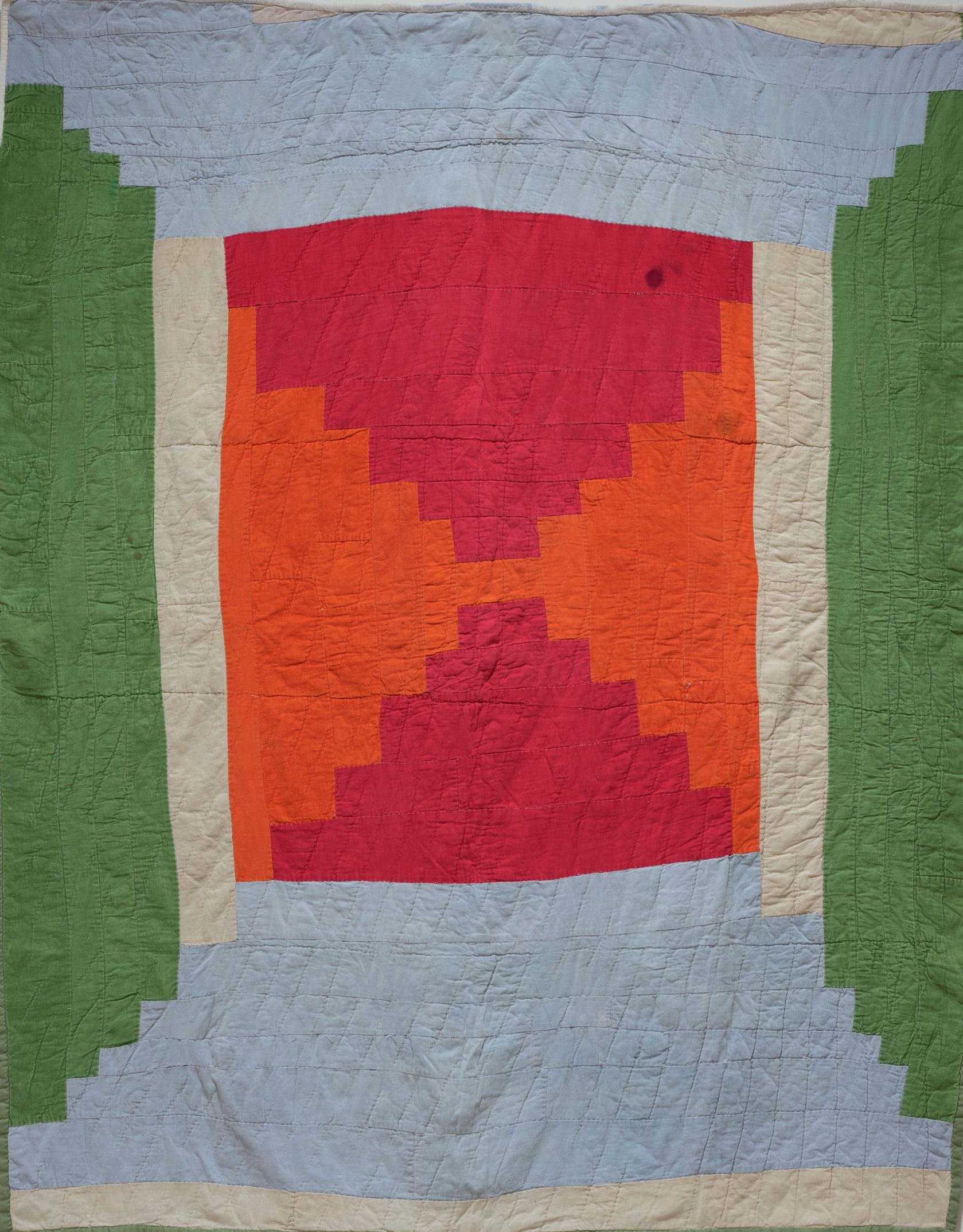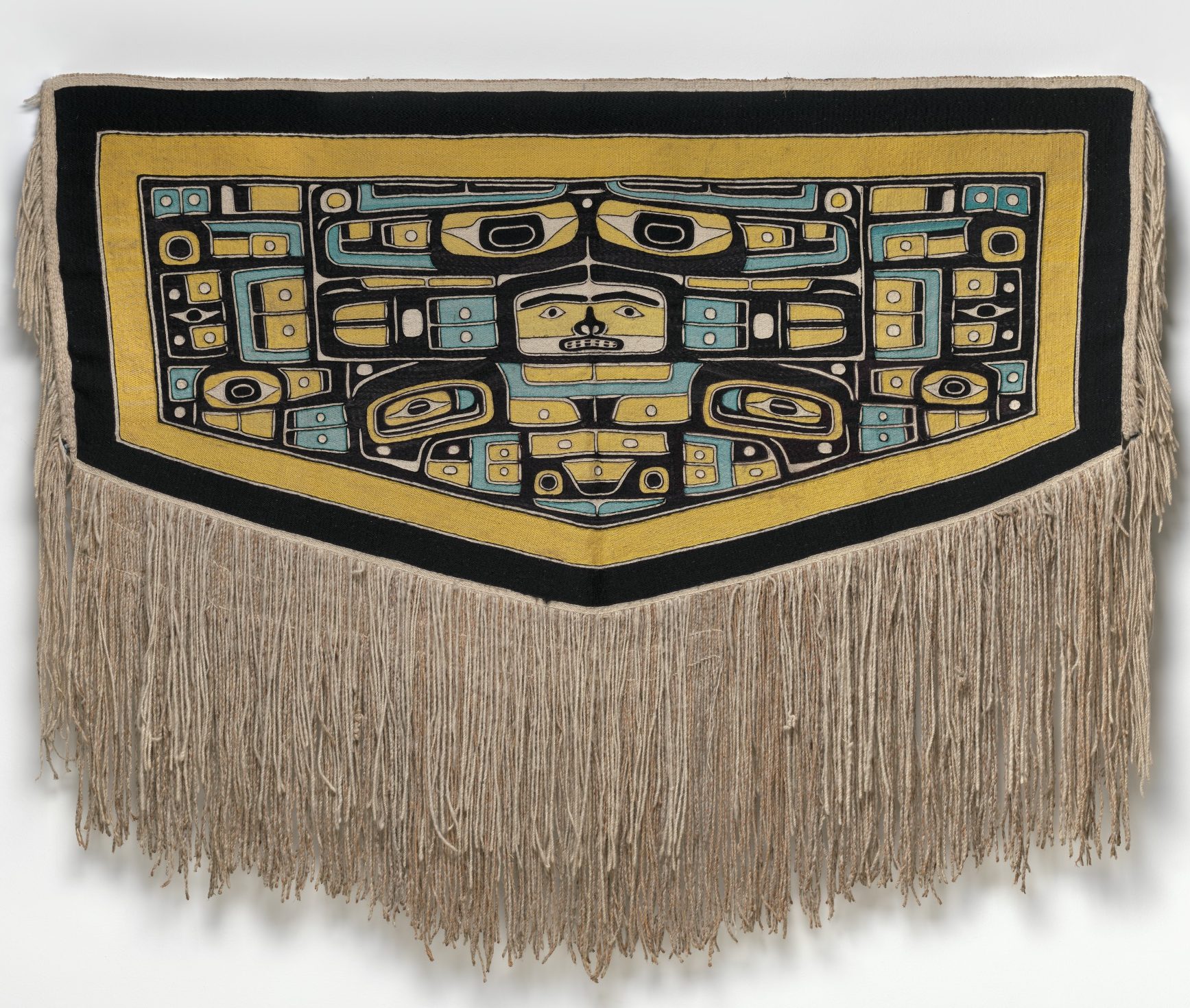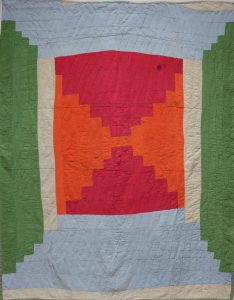
Exploring Shape: Squares, Rectangles, Circles, and More!
Use your observation skills to investigate how different artists have used shapes in their creations, and then use a variety of shapes to make your own art!
Introduction
The VMFA collection offers many works of art that feature shapes of all kinds. Use your observation skills to investigate how different artists have used shapes in their creations, and then use a variety of shapes to make your own art!
(These activities are designed to require increasing skill levels for students. The last two may need to be adapted for younger students.)
Note for Teachers: Scaffolding Opportunities!
To help your students build their understanding of shape and form, try selecting activities from the three sets of related VMFA resources described below. Each set of activities is scaffolded to move from simple to more complex activities. Pick and choose the best combination of lessons for your classroom.
- The Get into Shape gallery hunt and associated activities in Exploring Shape: Squares, Rectangles, Circles, and More (offered in this resource) focus on flat geometric and organic shapes.
- The Fold It, Bend It, Shape It gallery hunt and Fold It! activities leave “flat land” to investigate and make folded shapes.
- The Build It! gallery hunt and associated activities in Constructing Art: Catching the Viewer’s Eye examine 3-D structures and offer hands-on construction challenges.
Shapes and Quilts
This work of art is a quilt made by Jennie Pettway who lived in Gees Bend, a small African American community in Alabama. Gees Bend was home to several generations of quiltmakers, who were often related to one another.
To make their quilts, they mostly used small pieces of material saved from worn-out clothing or corduroy scraps left over from pillow covers that many of the quiltmakers produced for Sears, Roebuck in the 1970s.
What makes these quilts unique? These women did not follow conventional patterns! Most quiltmakers carefully follow standard patterns and continue the same pattern throughout the main section of the quilt. The Gees Bend quilt-makers, including Jennie Pettway, experimented with unusual designs, surprising colors, and interrupted patterns! Visit the Souls Grown Deep website to see many examples of their eye-catching quilts!
Which ones do you like best?
Make a Patchwork Square
You can make a patchwork design of your own using colored paper.
You’ll need:
- 4”x 4” paper squares in a variety of colors
- smaller paper shapes (triangles, squares, rectangles) in a variety of colors
(Pre-cut the shapes for younger children.) - scissors
- ruler
- glue sticks or bottled glue
Here’s a hint: Make your smaller shapes by cutting up 4” x 4” paper squares so that you will have smaller shapes that will fit within your base square.
Try cutting the squares in half—both lengthwise and diagonally. Cut the resulting shapes in half again. Keep going until you have triangles, rectangles, and squares of many different sizes. Can you think of math problems you could create using the shapes you’ve cut?
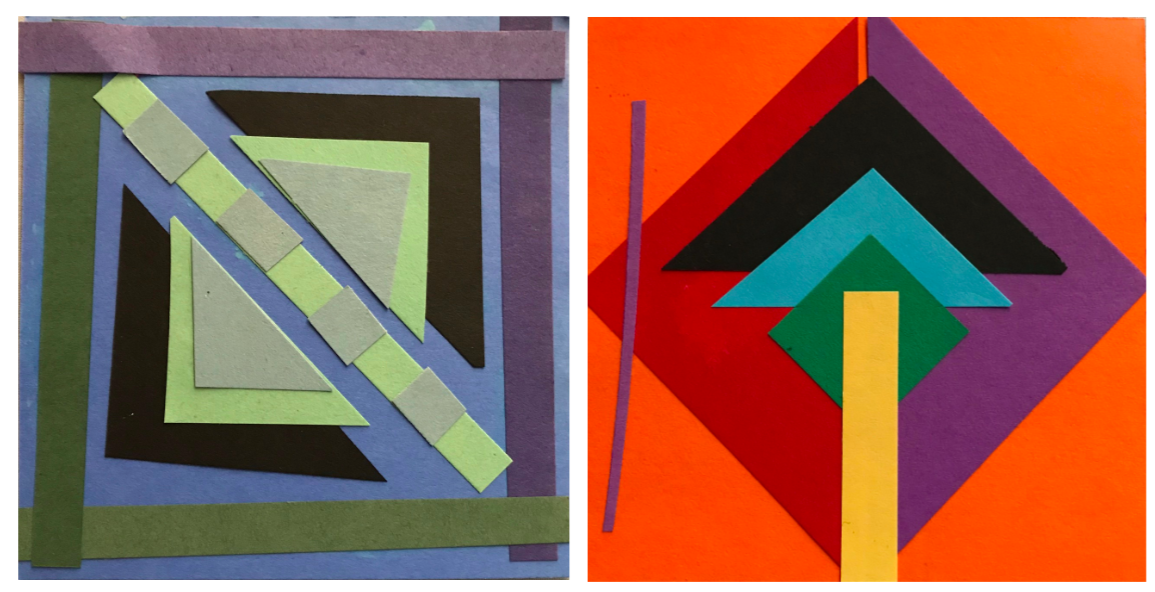
These examples were made by educators during a VMFA Teacher Open House.
Select a 4” X 4” base square and choose smaller shapes in different colors. Arrange the small shapes onto the base to form a pleasing pattern or design. Use the ruler if you want to arrange your shapes evenly across the page. Once you have decided on a design, glue your small shapes in place. Can you explain how you chose the colors and placements for your square?
If you are part of a class or group, assemble all of your individual squares on a large sheet of paper to make a larger paper quilt. Work with your classmates to create a border for your creation!
Exploring Shape: Painted Lines and Shapes
Do you like this colorful mural? The artist Esther Mahlangu painted it especially for the Virginia Museum of Fine Arts in 2014! You can watch her creating the mural here: Time-lapse of Esther Mahlangu @ VMFA.
Mahlangu is a member of the Ndebele people of South Africa. Ndebele women have a tradition of painting the outer walls of their houses with colorful designs. Mahlangu learned to create her painted designs from her mother and grandmother—and her own granddaughter Marriam helped her paint this mural painting on linen.
Mahlangu has been painting for over 70 years—and she never makes a pattern or design plan before she starts painting! She begins by outlining the shapes and patterns that she sees in her mind’s eye—without relying on a ruler or straight edge. Next, she fills in the colored areas, using large artist’s paint brushes for big areas—and sometimes just a single chicken feather for fine details.
Make an Ndebele-inspired Painting!
Paint your own design inspired by Mahlangu’s technique!
You’ll need:
- water-based or acrylic paint in several bright colors
- paint brushes of various sizes
- feathers (optional)
- a large rectangular piece of white paper or neutral-colored fabric
Here’s a hint: Unbleached muslin will work for your painting background if you coat it with watered-down glue. Add water to white glue until it’s about the consistency of milk. Use a big brush to apply the mixture and work the glue into the fabric. Let it dry and you’re ready to paint.
Perhaps you have an idea for your design in your mind’s eye, but try to create your work of art without making sketches or writing down a plan. Concentrate on shapes made with straight lines, including rectangles, triangles, and jagged shapes. Try using unusual tools, such as feathers, to apply the paint.
If you are part of a class or group, compare and contrast your individual paintings and discuss your process. Here are some questions to consider:
- What kinds of lines did you use?
(Practice your math vocabulary by using the terms: point, line, segment, and angle.) - What kinds of shapes did you use?
(Use your math vocabulary again with these terms: square, rectangle, polygon, and triangle.) - Did you use unusual tools to apply the paint? How did that feel?
- Did the shapes you chose have any symbolic meaning for you?
- How did you choose your colors? How would your design change if you changed the colors you used?
Exploring Shape and Symmetry: Chilkat Blankets
How does this Chilkat Blanket made by the Tlingit people of Alaska compare with the mural by Mahlangu? How many differences can you find? Are there any similarities? This blanket, woven with cedar bark, wool, and other fibers, was made to be worn like a cape or shawl on important occasions, including ceremonial dances.
Here’s a big difference between the Esther Mahlangu mural and this Chilkat blanket: the blanket was created using a carefully designed pattern!
The pattern the weaver used was painted on a large flat wooden panel. Male artists of the Tlingit people make the pattern boards. Female artists then follow the pattern as they weave the blankets.
Here’s an example of a pattern board that shows a pattern similar to the one in the blanket. Does anything about the board surprise you?
Can you figure out why the artist didn’t complete one side of the pattern?
How might the weaver have finished her work?
The solution to these problems lies in the concept of symmetry. As you look at the Chilkat blanket, can you locate a section that looks like a little face in the center of the blanket? Imagine that there is a vertical line drawn through the center of the face that divides the whole blanket into two halves. Can you see how those two halves match one another?
When exactly matching designs (or parts) face each other on either side of a line, the whole design is called symmetrical—and the dividing line is called the line of symmetry. The weaver finished the blanket by creating a mirror image of the first half of the pattern on the other side of the line of symmetry.
Each Chilkat blanket can take up to a year to make, so they are very valuable and are passed down from one generation to the next. The patterns on traditional blankets are symbols of the extended families (or clans) of the Tlingit people. Scholars think that the central figure (the section that looks like a little face) represents the spirit of the clan’s animal symbol.
The shapes that surround the animal spirit represent other body parts of the animal, such as legs, claws, wings, etc. These parts are shown in a very stylized way. A stylized representation of something means that the image doesn’t look exactly like it does in the natural world. Examples might include a stick figure of a runner or the sun represented by a circle surrounded by rays.
Scholars have a lot of different ideas about exactly what the various Chilkat blanket forms represent. Perhaps only the artist who designs the pattern truly understands the full symbolic meaning of the blanket.
Make Your Own Chilkat Blanket-inspired Design
You’ll need:
- scratch paper and pencil for working out your designs
- a large sturdy piece of rectangular paper for the base of your design
- colored construction paper (in at least three colors)
- glue stick or glue
- ruler
- scissors
First choose an animal as your symbol.
Think about all the parts that your animal has (head, eyes, legs, wings, beak, claws, etc.). Make some sketches of what your spirit face might look like.
What shapes can you think that would suggest other animal parts? Notice that many of the designs made by the Tlingit artist have curves and rounded edges.
Be sure to include some circles and curved forms in your sketches.
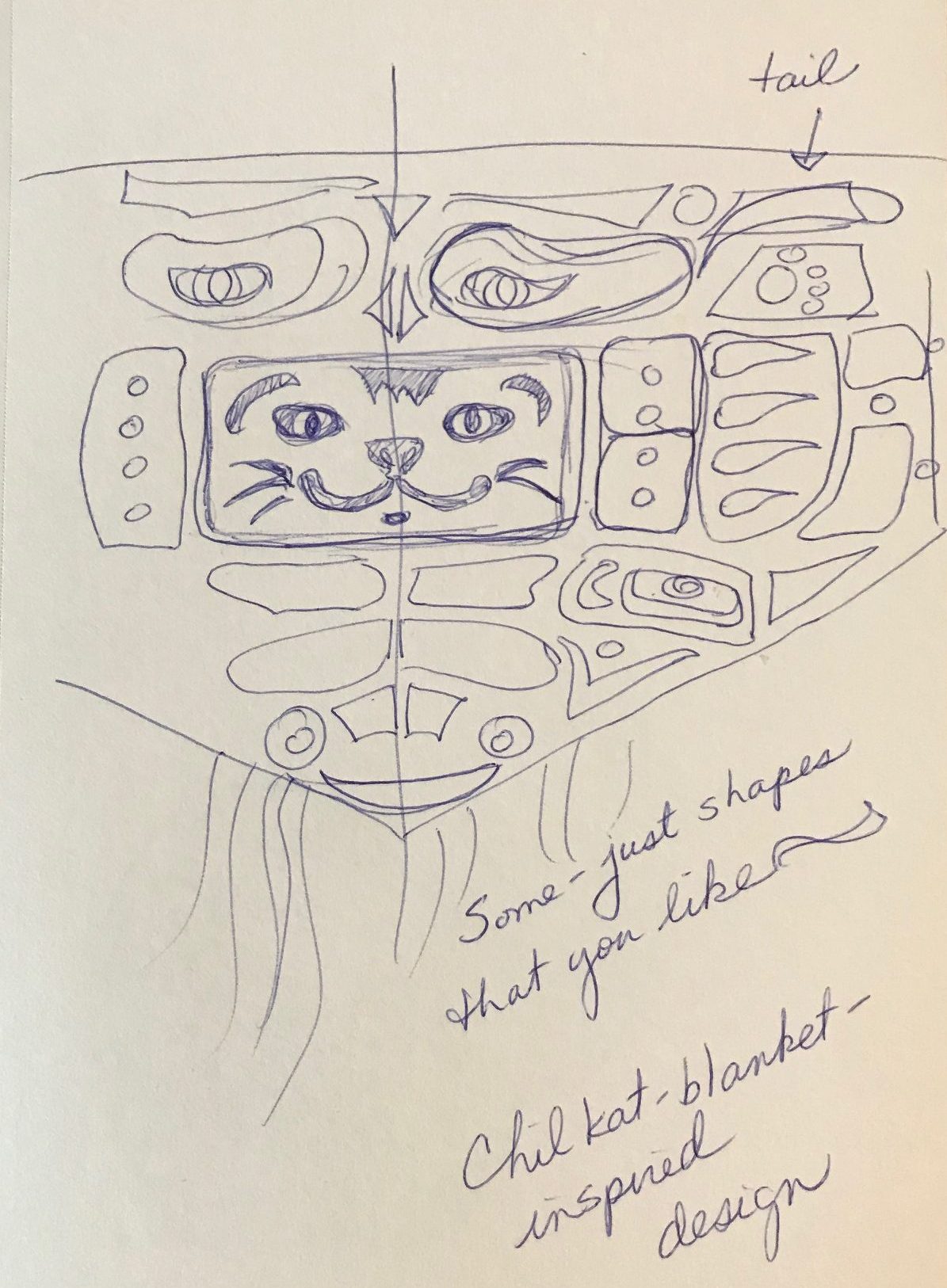
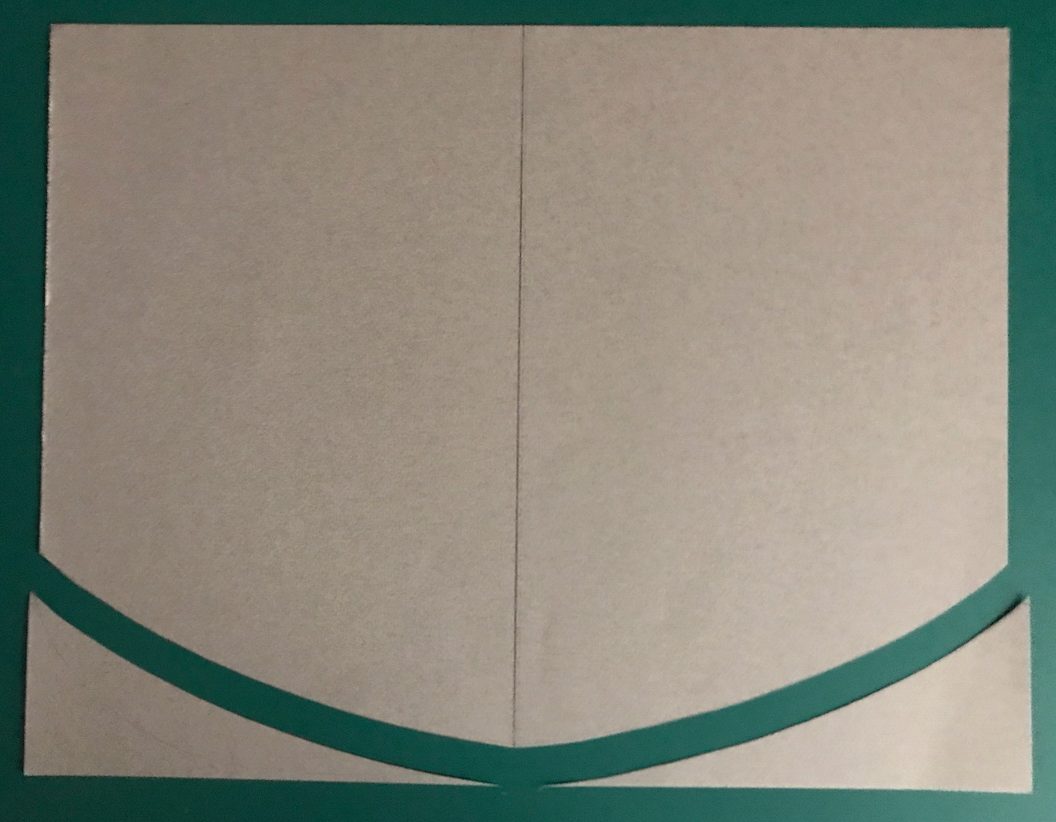
Next, make a background for your design that’s shaped like the Chilkat blanket. A good size might be 16“ x 12“.
Draw a vertical line down the middle of your sheet of study paper. This will be the line of symmetry for your design.
Make a small pencil mark on both sides of the paper 3 inches from the bottom. Then, cut a curve from the mark to the bottom of the paper where your line of symmetry ends. Flip the discarded scrap over and use it as a template to make the same curve on the other side.
Make the symbolic spirit form that looks like a little face first. Choose a piece of colored paper and fold it over. Mark out one half of the shape you sketched for your face on the folded paper and cut out along the line. Be sure not to cut the fold! When you unfold the paper, you should have a whole shape for the face. (The fold in the middle is the line of symmetry!)
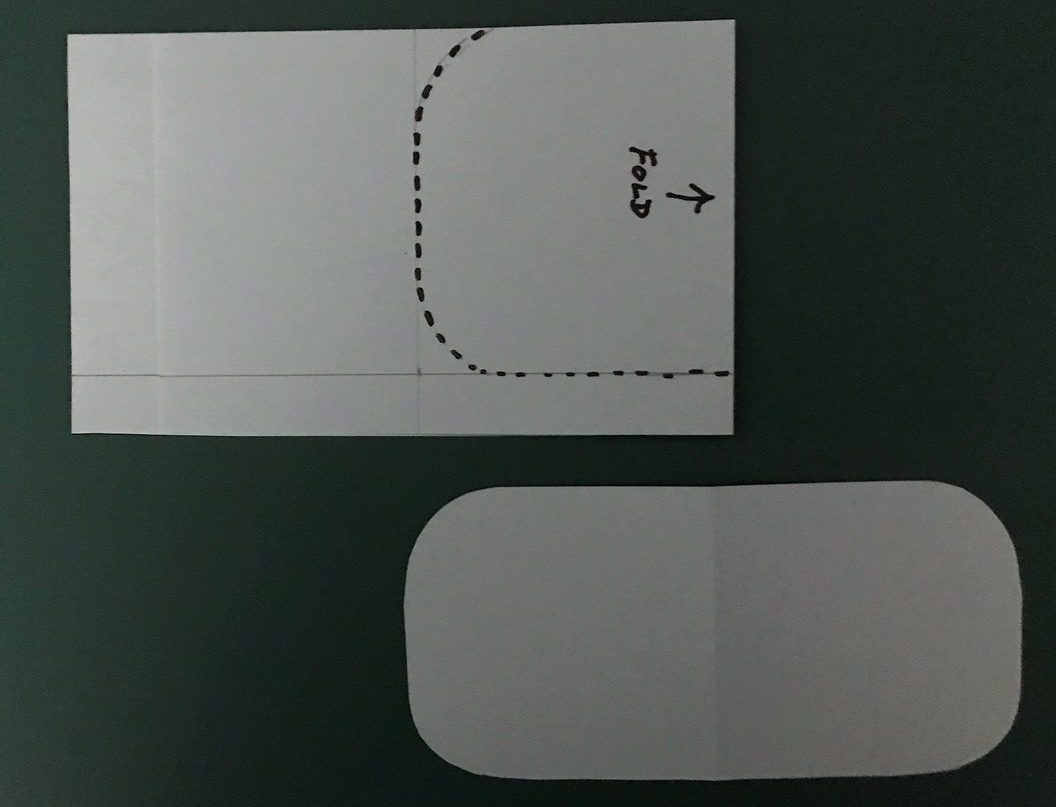
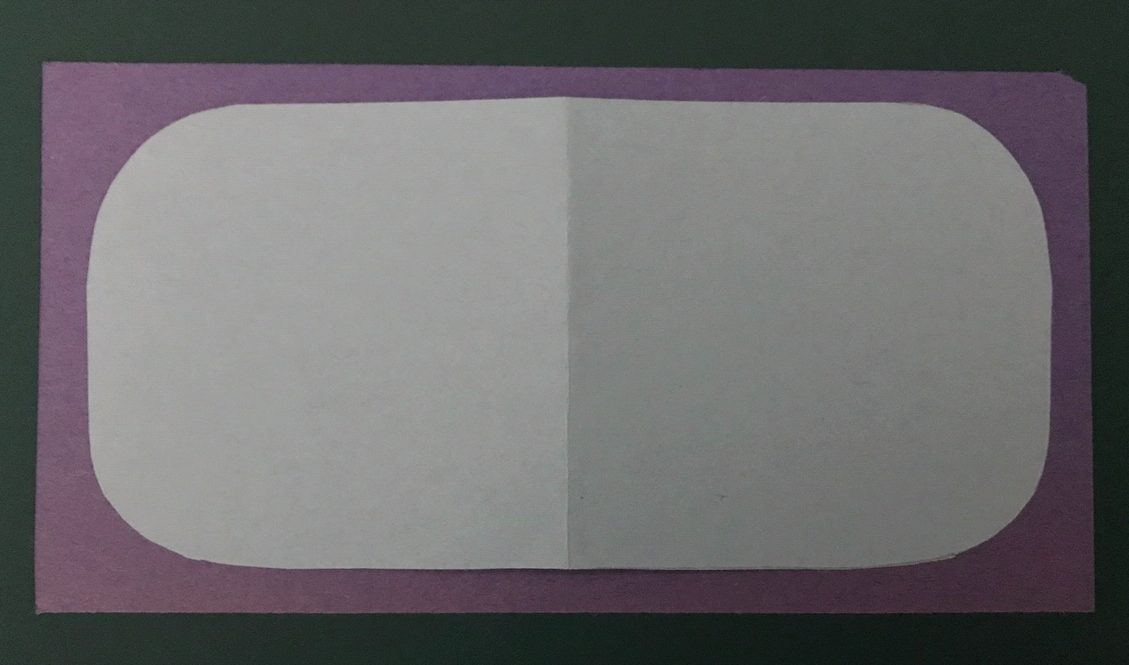
Glue your face to a different color of paper. Then trim it so that it’s a little larger than the face—making sure to round off the corners. (See the finished example below.) This step makes a frame for your spirit face.
Next, cut out shapes for the features of your spirit face. If the shape crosses the line of symmetry, cut one half of the design using a folded piece of paper—just like you did to make the face shape. If the shapes are facing one another on the two sides of the line of symmetry, use two pieces of paper stacked together and cut two shapes at once. Flip one over to make the matching design on the other side of the face. Glue your shapes into place making sure that the two sides match.
Now, glue the spirit face in place, matching the fold line up with the light pencil line of symmetry on your design base.
Cut out the other shapes you’ve sketched in a variety of colors and arrange them on your base until you are satisfied with your design. Remember to use folded paper if the shape crosses the line of symmetry—and two stacked pieces of paper for the other shapes.
Make sure that your designs match up on the two sides of your design. If you have a small mirror, you could check the match by placing the edge of the mirror along the line of symmetry. The design behind the mirror should match the reflection.
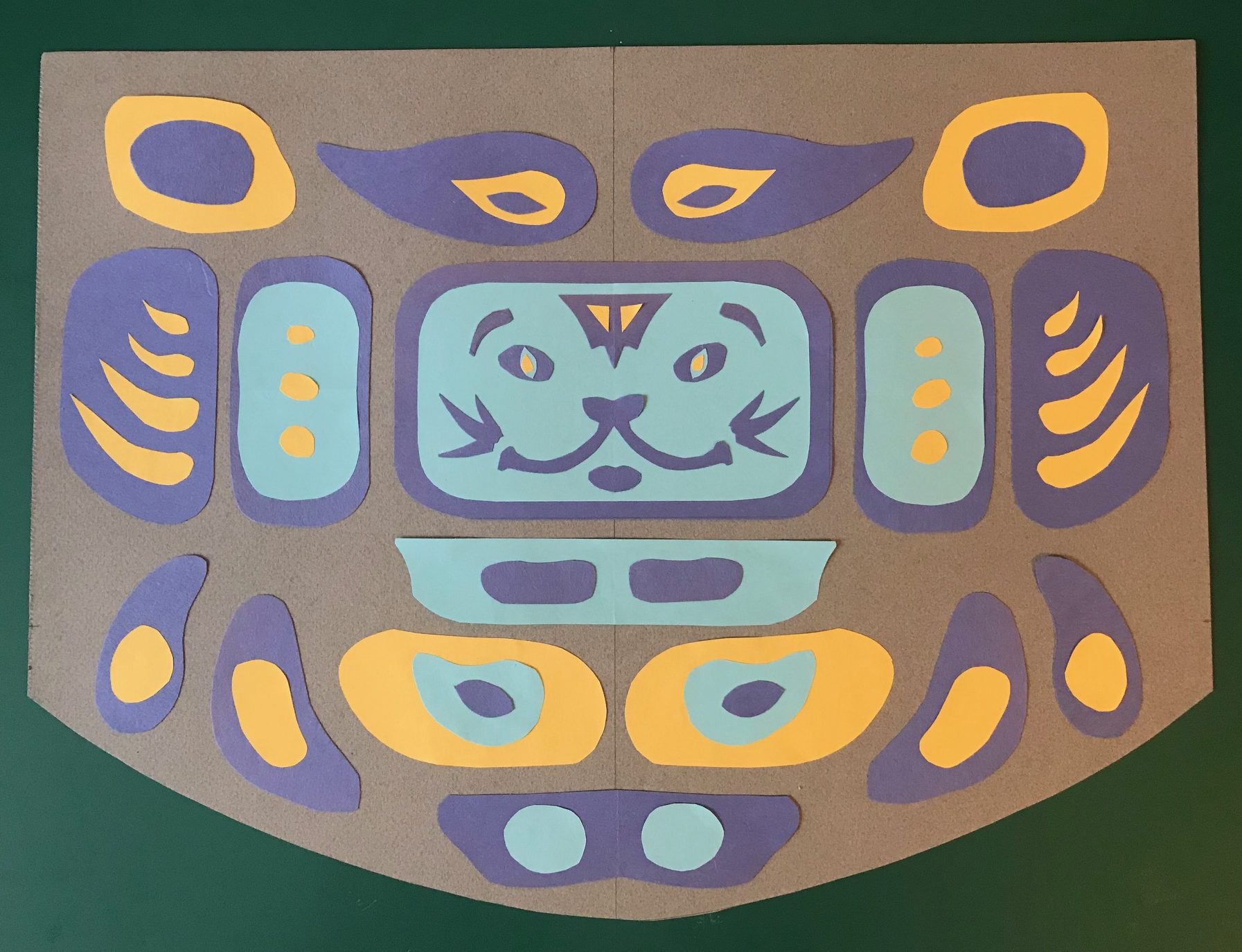
This VMFA Art-Making Adventure relates to the following Virginia SOLs:
2020 Visual Arts standards: K.1.b, K.2.c, K.6.b, K.12.b&c&e, K.13, K.16, 1.1.a, 1.3.b, 1.13.c, 1.13.a, 1.15, 1.16, 2.2.a&b, 2.6.a, 2.12.c&d, 2.15, 3.1, 3.3.b,3.11, 3.12.c&e
2013 Visual Arts standards: K.1, K.3, K.7.3, K.7.5, K.12, 1.1, 1.7, 1.16, 1.17, 2.5.3, 2.5.4, 2.12, 3.2, 3.4, 3.7.3
2016 Mathematics standards: K.10.a&b, 1.4.b, 1.11.b, 2.12.a&b, 2.13, 3.11
